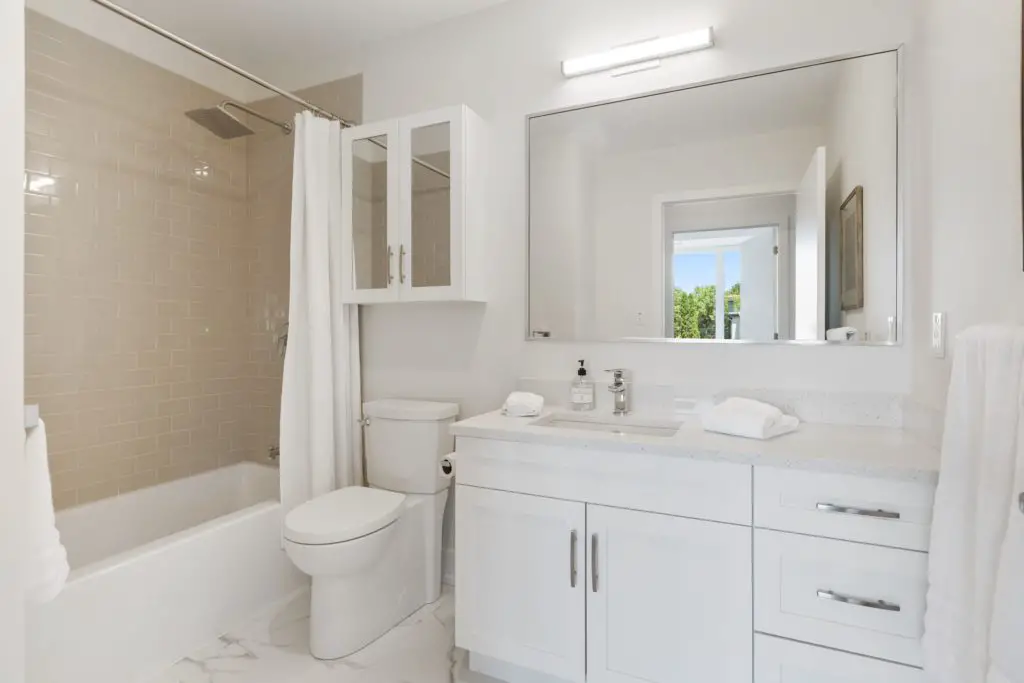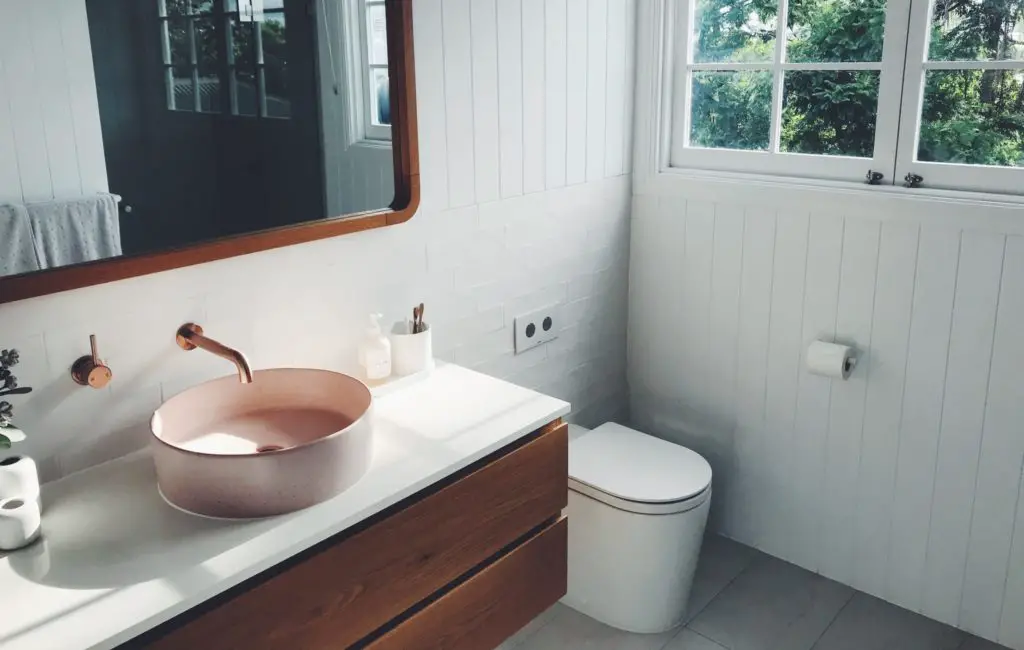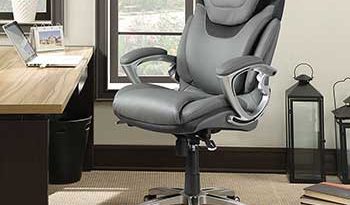How to Vent a Bathroom With No Outside Access
**Articles may contain links that I earn compensation for if clicked and you make a purchase. As an Amazon Associate, I earn from qualifying purchases. These earnings do not actually impact the price of the product or service.
Bathrooms are certainly the wettest place in your home. It’s not uncommon for your shower to get steamy, for the toilet to flush, for the sink to run, and there will be occasional drips if things are not taken care of.
This can lead to an uncomfortable atmosphere where mold, mildew, and other unpleasant problems arise. Is it necessary to vent a basement bathroom? Yes, All bathrooms require ventilation.
According to the code, in many places, the building contractors must ensure that bathrooms have adequate ventilation. It is beneficial to install larger ducts in bathrooms to ensure greater circulation of air, along with a larger bathroom vent fan in order to achieve this.
However, contractors do not always follow this rule. The result is usually inadequate ventilation, which can result in further issues. So, adding a ceiling vent to a bathroom is the easiest way to ensure it is properly ventilated.

Table of Contents
Building Code and Bathroom Ventilation
First, let’s look at the requirements of the building code to find out whether or not we can solve the ventilation problem in the bathroom.
Having adequate airflow in the bathroom is essential to eliminating moisture and odors. Modern bathrooms tend to accumulate moisture as technology advances. Moreover, a hot shower causes a puddle inside the bathroom, which fogs the mirrors.
In most municipalities, laws require bathrooms required to be vented. You may achieve this with an exhaust fan or opening windows. The latter is not an effective or efficient ventilation system.
A larger bathroom duct system provides for better airflow and is compatible with a large bathroom vent fan to improve airflow further.
Common Signs That You Need More Ventilation in Your Bathroom
Moisture Intrusion
You will find sinks, baths, and showers in almost every bathroom. Therefore, even if you do not use your bathroom very often, moisture will accumulate if it is not well ventilated.
Stuffiness
Do you remember the last time you were in a room with poor airflow? If so, you most likely noticed how stifling the atmosphere was. It is very easy to imagine how it would be for you to experience a situation in a bathroom where it is very stuffy and uneasy.
Mold
Bathrooms with poor ventilation are most likely to have this type of problem. Throughout the lengthier period, these bathrooms are dark and damp; mold and mildew flourish on the walls and tiles because of the moisture trapped inside.
Bathroom mold poses serious health risks. Mold may cause allergic reactions as well as respiratory illnesses.
Stains on Ceiling
Several stains appear on the walls or roof, which indicate that there is no appropriate ventilation. The moist air in the bathroom has accumulated in the house due to the excess moisture.
Smells That Stay
Be sure to provide adequate ventilation if you need to combine a toilet and a shower. Think about how you would feel if someone had used the restroom and wanted to shower immediately. You probably couldn’t stand the stench.
Furthermore, you will always leave your bathroom door open, which allows unpleasant bathroom odors to spread throughout your home.
Poorly ventilated bathrooms or toilets tend to keep the smells from the toilet long after flushing. Be prepared for the bathroom to smell after 30 minutes or longer.
Is There a Way to Vent a Bathroom Without Allowing Outside Access?
 If you are unable to access the outside, you can refer to some other options. You should consult an HVAC contractor, and get a bath fan if possible. Moreover, the following suggestions should help to ensure proper ventilation.
If you are unable to access the outside, you can refer to some other options. You should consult an HVAC contractor, and get a bath fan if possible. Moreover, the following suggestions should help to ensure proper ventilation.
However, the installation of a bathroom fan without outside access can be difficult.
Use of a Ceiling Vent
An air vent on the ceiling is likely to be the most effective method of ventilating a bathroom without needing an external air supply. Bathroom ceiling vents allow air to escape the room from the ceiling. In other words, it’s a device that, similar to a window in a bathroom, helps to eliminate moisture.
Hence, when installing a ceiling vent in your bathroom, you can rest assured that it will not be moist or humid at all times. A professional should install it if you cannot do it yourself.
ProTip Takeaway: Ceiling vents are generally equipped with a light fixture. Because of this, they can serve both as ceiling vents and as light sources.
Using a Floor Duct Vent
A bathroom that is far from your exterior wall will not be able to ventilate through the roof. And this problem often affects bathrooms under stairs.
However, if you cannot use ceiling vents within the bathroom and do not have access to the outdoors, you can use a duct vent to ventilate the bathroom.
A bathroom floor duct vent is a special machine that removes moisture from the bathroom by utilizing floor grates to improve the air quality in your bathroom.
Thus, floor duct vents offer additional exit points for noxious odors and reduce the moisture content in your bathroom. They accomplish this by opening and allowing air to flow.
ProTip Takeaway: Find out if you can extend a bath fan through the floor by having your HVAC contractor do so. You can see a plumbing vent here running between floor joints and exiting through the exterior wall.
Using Extra Ducts
If your bathroom does not have sufficient ventilation, it might be because you only have one-floor duct instead of two or three. It’s necessary to add another floor duct if the one-floor duct doesn’t provide enough ventilation.
The same situation may occur if a ceiling duct in your bathroom isn’t functioning properly. Adding a few extra ceiling ducts can increase ventilation power.
Venting Through Joists
The technique of venting resembles the one outlined above. Rather than rely on a ductwork system that’s complex and difficult to install, you can simply cut a hole in the joist cavity on the first floor to vent the bathroom air outside. Using this method, you can get the air-ventilated in your basement bathroom.
It is difficult to install a venting system through this joist cavity. Cavities underfloor joists are tight and difficult to work in. You may also find other obstructions in your ductwork that you need to workaround.
Using the Right Bath Fan
The HVAC contractor will install the correct bath fan. The bathroom will have a proper ventilation system from the bathroom all the way to the exit. The fan can keep the bathroom clean and dry by pushing moisture and odors outside.
The size of the bath fan depends on how much air it can move at any time. A fan’s size is determined by its CFM (Cubic Feet Per Minute), and a fan’s ability to remove air in cubic feet in a minute is measured.
The bathroom requires a fan that can move approximately one cubic foot of air per minute per square foot. A 40CFM venting fan is required for an efficient bathroom.
Besides determining the size of the bathroom, you also need to determine how frequently the bathroom is used. Using a fan with a higher CFM rating is recommended if more than one person shares a bathroom.

Half-Bath Recirculating Fan
Keep in mind that recirculation fans do not exhaust air outdoors. An air purifier in your bathroom removes odors from the air through a filter.
This bathroom does not have any showers, so the humidity is low. The half bath is a perfect fit for it.
Hire a Professional
A bathroom can be tough to ventilate on your own, and you may experience problems. A professional can help you with this.
In a professional setting, situations are dealt with in various ways. They can ventilate almost any space. Some types of ventilation systems are difficult to install for most homeowners due to a lack of knowledge and tools.
A professional installation of new ventilation is usually very expensive. You should, therefore, only hire a professional if you are certain that you cannot perform the task yourself.
Wipe Up Any Puddles
You should never ignore puddles or drips. Wet areas should be immediately wiped up with an absorbent bathmat.
Bathroom floors without puddles are much safer. During the 15+ minutes of fan run time, a substantial portion of the entire bathroom dries in a timely manner. By doing this, mold growth and mildew spore development are prevented.
Conclusion
If you are planning to install a bathroom vent without having access from the outside, you will need to hire the services of an experienced contractor. You can ask your contractor which method is most suitable for you in specific circumstances.


![Wall Mounted Shower Seat [Top 10 List]: Ultimate Buyer and User Guide 9 Wall Mounted Shower Seat Top 10 List Ultimate Buyer and User Guide](https://thehomeguide.net/wp-content/uploads/2020/06/Wall-Mounted-Shower-Seat-Top-10-List-Ultimate-Buyer-and-User-Guide-390x205.jpg)